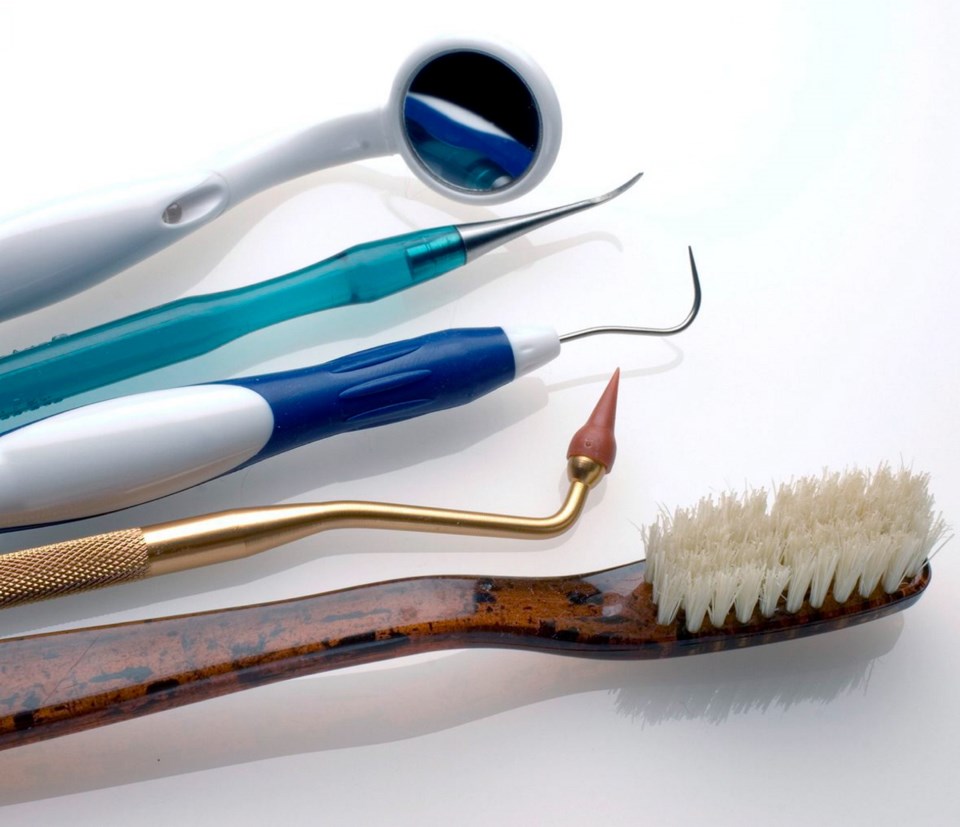Dentists are busy catching up on backlogs of patients as pandemic restrictions lift across the region.
Some patients due for general cleanings and checkups might have to wait longer as dentists attend to those in extreme pain or who had partial treatments and temporary work done before COVID-19 closed offices in mid-March.
“After two or three months, a small problem in February is now a greater one — a filling might be a root canal — or temporary crowns that didn’t last,” said Dr. Maico Melo, a dental surgeon who runs practices in Victoria and Duncan. “The huge number of partial treatments creates a real nightmare for patients and dental professionals.”
Melo, past president of the Canadian Association of Dental Surgeons and board member of the College of Dental Surgeons of sa���ʴ�ý, continued practising through the pandemic as an essential-service provider. He handled about 50 cases of patients needing emergency attention over six weeks, regardless of whether they had insurance to cover costs.
He said COVID-19 has “magnified” problems with oral health, and governments need to do more to fund dental care.
Melo said dentistry gets less than 0.2 per cent of the entire health budget in sa���ʴ�ý, noting of about $2 billion earmarked for physicians, less than $4 million is channelled to dentistry.
Dr. Ross Crapo, who closed his Broadmead office on March 16 and reopened May 19, said dental diseases are some of the most “ubiquitous diseases on the planet,” including gum disease, decay and loss of teeth.
“The mouth is such a dynamic environment,” said Crapo. “And 50 per cent of the population don’t see a dentist unless there’s an emergency.”
Dental offices were part of sa���ʴ�ý’s second phase of openings and have to adhere to strict guidelines from the province and professional colleges. Although hygiene procedures have always been a high priority in dental settings, Crapo said changes had to be made.
“During that time we were closed, we were watching locally and globally and we knew we had to open with different routines,” Crapo said. “Dental offices that offer a wide range of services like surgeries are miniature hospitals themselves, so everybody has to come to that level. In retrospect, with what has been done, we feel our protocols would allow us to practice through a potential second wave [of the coronavirus].”
Reopened dental offices might feel and look different, and care methods will change, Alastair Nicoll, head of the sa���ʴ�ý Dental Association’s COVID-19 task force, said last month.
Patients are being asked about their health by phone before an appointment. Bookings are spread out to avoid patients crossing paths. Waiting rooms will not have magazines or toys, and patients will likely go straight to the dentist’s chair upon arrival, after speaking to front-desk staff behind a plexiglass barrier.
Other new measures include gowns and face shields or specialized coverings that allow dentists to continue to use magnifying eyewear.
Nicoll said dentists have been dealing with the risk of cross-infection for years, citing previous outbreaks of H1N1, Hepatitis A, Hepatitis C and influenza. “So we are well used to rigorous sterilization protocols.”
Crapo said he has installed high-efficiency scrubbing systems, allowing the dental office to filter the air for organisms 10 times smaller than the coronavirus. He said the system turns the air over in the office every 10 to 15 minutes.
Dentists are also required to use higher-volume suction to clear aerosols created when using high-speed hand tools for drilling and grinding. Guidelines also say aerosol-generating tools “must be kept to a minimum” to avoid the spread of excess droplets.
Crapo said every patient and staff member receives a temperature check and pulse oximeter, which attaches to a fingertip and shows the percentage of oxygen in your blood coming from your heart, as well as your pulse rate. Anyone with an oximeter rate of 90 or under won’t be permitted in the office and would be asked to book an appointment in 14 days. Crapo said.
— With files from Glacier Media



